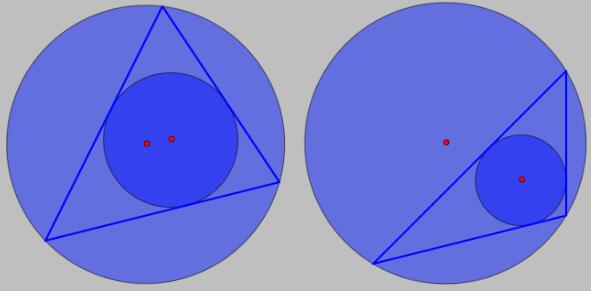使用python绘制人人网好友关系图示例
代码依赖:networkx matplotlib
复制代码 代码如下:
#! /bin/env python
# -*- coding: utf-8 -*-
import urllib
import urllib2
import cookielib
import re
import cPickle as p
import networkx as nx
import matplotlib.pyplot as plt
__author__ = """Reverland (lhtlyy@gmail.com)"""
# Control parameters,EDIT it here
## Login
username = 'None'
password = 'None'
## Control Graphs, Edit for better graphs as you need
label_flag = True # Whether shows labels.NOTE: configure your matplotlibrc for Chinese characters.
remove_isolated = True # Whether remove isolated nodes(less than iso_level connects)
different_size = True # Nodes for different size, bigger means more shared friends
iso_level = 10
node_size = 40 # Default node size
def login(username, password):
"""log in and return uid"""
logpage = "http://www.renren.com/ajaxLogin/login"
data = {'email': username, 'password': password}
login_data = urllib.urlencode(data)
cj = cookielib.CookieJar()
opener = urllib2.build_opener(urllib2.HTTPCookieProcessor(cj))
urllib2.install_opener(opener)
res = opener.open(logpage, login_data)
print "Login now ..."
html = res.read()
#print html
# Get uid
print "Getting user id of you now"
res = urllib2.urlopen("http://www.renren.com/home")
html = res.read()
# print html
uid = re.search("'ruid':'(\\d+)'", html).group(1)
# print uid
print "Login and got uid successfully"
return uid
def getfriends(uid):
"""Get the uid's friends and return the dict with uid as key,name as value."""
print "Get %s 's friend list" % str(uid)
pagenum = 0
dict1 = {}
while True:
targetpage = "http://friend.renren.com/GetFriendList.do?curpage=" + str(pagenum) + "&id=" + str(uid)
res = urllib2.urlopen(targetpage)
html = res.read()
pattern = '<a href="http://www\\.renren\\.com/profile\\.do\\?id=(\\d+)"><img src="[\\S]*" alt="[\\S]*[\\s]\\((.*)\\)" />'
m = re.findall(pattern, html)
#print len(m)
if len(m) == 0:
break
for i in range(0, len(m)):
no = m[i][0]
uname = m[i][1]
#print uname, no
dict1[no] = uname
pagenum += 1
print "Got %s 's friends list successfully." % str(uid)
return dict1
def getdict(uid):
"""cache dict of uid in the disk."""
try:
with open(str(uid) + '.txt', 'r') as f:
dict_uid = p.load(f)
except:
with open(str(uid) + '.txt', 'w') as f:
p.dump(getfriends(uid), f)
dict_uid = getdict(uid)
return dict_uid
def getrelations(uid1, uid2):
"""receive two user id, If they are friends, return 1, otherwise 0."""
dict_uid1 = getdict(uid1)
if uid2 in dict_uid1:
return 1
else:
return 0
def getgraph(username, password):
"""Get the Graph Object and return it.
You must specify a Chinese font such as `SimHei` in ~/.matplotlib/matplotlibrc"""
uid = login(username, password)
dict_root = getdict(uid) # Get root tree
G = nx.Graph() # Create a Graph object
for uid1, uname1 in dict_root.items():
# Encode Chinese characters for matplotlib **IMPORTANT**
# if you want to draw Chinese labels,
uname1 = unicode(uname1, 'utf8')
G.add_node(uname1)
for uid2, uname2 in dict_root.items():
uname2 = unicode(uname2, 'utf8')
# Not necessary for networkx
if uid2 == uid1:
continue
if getrelations(uid1, uid2):
G.add_edge(uname1, uname2)
return G
def draw_graph(username, password, filename='graph.txt', label_flag=True, remove_isolated=True, different_size=True, iso_level=10, node_size=40):
"""Reading data from file and draw the graph.If not exists, create the file and re-scratch data from net"""
print "Generating graph..."
try:
with open(filename, 'r') as f:
G = p.load(f)
except:
G = getgraph(username, password)
with open(filename, 'w') as f:
p.dump(G, f)
#nx.draw(G)
# Judge whether remove the isolated point from graph
if remove_isolated is True:
H = nx.empty_graph()
for SG in nx.connected_component_subgraphs(G):
if SG.number_of_nodes() > iso_level:
H = nx.union(SG, H)
G = H
# Ajust graph for better presentation
if different_size is True:
L = nx.degree(G)
G.dot_size = {}
for k, v in L.items():
G.dot_size[k] = v
node_size = [G.dot_size[v] * 10 for v in G]
pos = nx.spring_layout(G, iterations=50)
nx.draw_networkx_edges(G, pos, alpha=0.2)
nx.draw_networkx_nodes(G, pos, node_size=node_size, node_color='r', alpha=0.3)
# Judge whether shows label
if label_flag is True:
nx.draw_networkx_labels(G, pos, alpha=0.5)
#nx.draw_graphviz(G)
plt.show()
return G
if __name__ == "__main__":
G = draw_graph(username, password)


